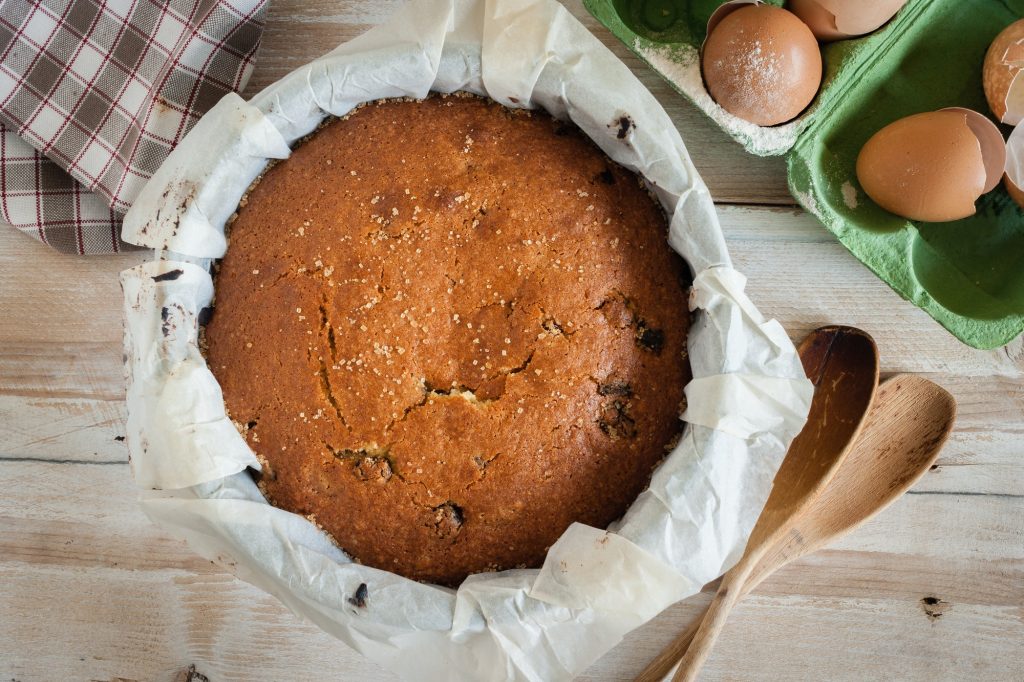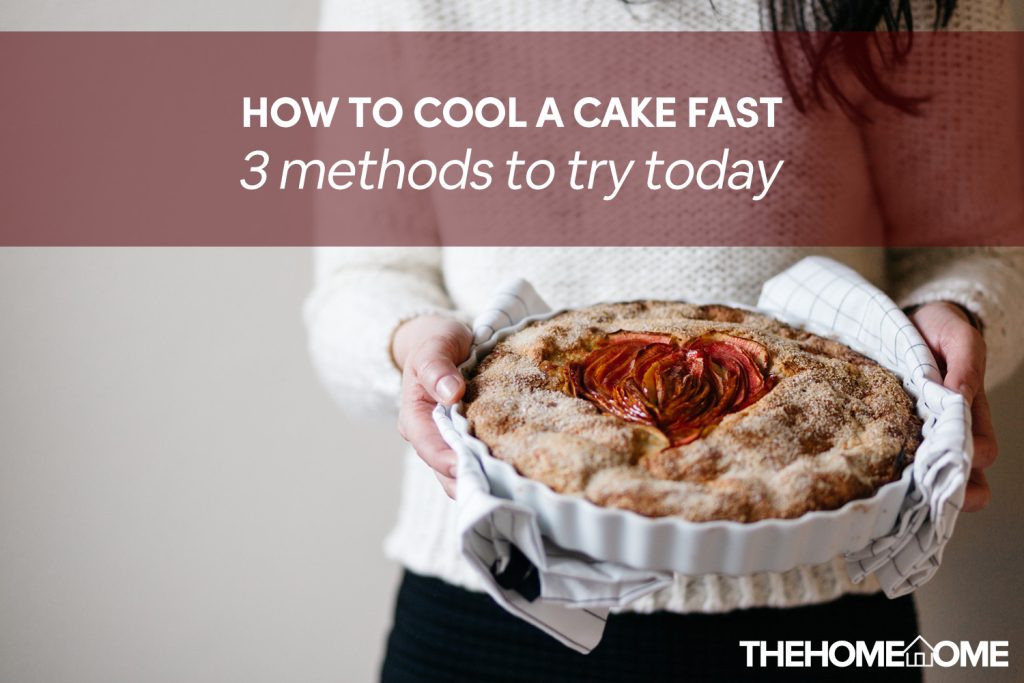Cooling your newly baked cake fast can be a sweet problem. Let’s paint a scenario for you. So from your batter, you’ve just baked a cake, and it came out looking perfect just as planned.
The issue now is you are running out of time, and you need to start frosting it immediately as you can’t wait to let it sit around and cool for hours. So how do you go about it? Is it possible to cool off your cake fast?
Cooling your cake very fast is very easy and depending on the type of cake you are baking and how urgent it is for it to cool off, there are several techniques to try out. However, if you improperly cool your cake it might end up getting cracked or soggy.
However, putting your cake in the refrigerator to cool is a very quick method. Or you can decide to put it in a wire rack to cool, or even flip it upside down for a better cooling effect. Whichever works best for you.
Now it is time to find out how you can cool your cake fast. All you need to do is follow the tips and instructions in this article, and you are good to go.
How to Cool A Cake Fast
Cooling down a cake can simply be done by placing the cake on the counter. The room temperature will help reduce the heat naturally. Just be sure to take out the cake from the baking pan and place it on another tray to quicken the cooling process.

Method 1 – The Refrigerator Method
That’s enough time to cool off the cake and not dry it out. Every cake needs time to cool down before frosting it. Here are 3 quick methods to help cool off your cake fast.
This is the fastest method. Various people believe that using the freezer is a great way to cool a cake down fast. This may be true, but it has to be done properly. Keep in mind that this method may cause the cake to deflate, due to this, the method should be reserved for emergencies.
A hot cake releases steam and heat which allows it to retain its structure and refrigerating it might sabotage it. Below are guidelines to take note of when using the refrigerator method;
- Bring out your cake from the oven. Once your cake is ready, use your oven mitts to take it out from the oven and place it on the kitchen counter. Let it sit there for 10 minutes.
- Place your cake in the refrigerator, after cooling it briefly at room temperature. Put your cake in the refrigerator for another 5-10 minutes. This will help cool the cake without drying it out. The cake should be cool enough to touch after 10 minutes.
- Remove your cake from the fridge and seal the cake tightly with plastic wrap. This will help keep the moisture in as it continues to cool.
- Put the cake back in the fridge to cool for another 1-2 hours. For angel or pound cake let it cool for an hour. And cheesecakes should stay in the fridge to cool for 2 hours.
- Loosen the cake from the pan with a knife or better still a butter knife. Run the knife along the edges of the pan between the rim of the pan and the cake. Ensure that you hold the knife properly, so you don’t mistakenly cut the sides of your masterpiece.
- Position a plate as wide as the pan over the cake pan. Hold the plate and the pan together and turn them upside down. If your cake is very delicate, gently hit the bottom of the pan until you feel the pressure dropping to the plate underneath.
- Now that you have ensured that the cake is cool, you are free to frost and decorate it whichever way you like.

2. Cooling Rack Method
This is a great traditional way to cool a cake faster, and it is used by many bakers. A wire cooling rack allows air to circulate throughout the entire cake. This allows the cake to cool quicker than when it is kept on a countertop.
A cooling rack can bring the cooling time down from an hour to about 45 minutes. Make sure to pick the right cooling rack. Choose a wire rack that can fit in your dishwasher and the areas you will want to keep it.
The following are the tips to consider when using a cooling rack;
- Take the cake out of the oven when it is ready. Put the pan directly on your cooling rack. If you are cooling a cheesecake, turn off the oven and leave your cake in the oven to cool for an hour. This lets the cheesecake cool slowly and prevents it from cracking.
- Cooling time for cakes may differ depending on the size but you should expect to cool your cake on the cooling rack for 10-15 minutes.
- Loosen the cake from the pan with a knife or better still a butter knife. Ensure that you hold the knife vertically so you don’t mistakenly cut into the sides of your masterpiece.
- Before putting your cake on the cooling rack, you should spray your rack with cooking spray. This will prevent it from sticking to the wire rack.
- Set the cooling rack with the cake on it close to the fan. This will help speed up the cooling process and save time.
- Remove the cake from the cooling rack. After fully cooling it for 1 or 2 hours, you can then transfer it to a plate and decorate it however you prefer.
4. Layering Method
This is a very helpful method. If cooling down a cake fast is of utmost importance then go with a layered cake. Having several detachable layers can hasten the cooling process of the cake. Typically a cake can take about 45 minutes to cool, but with this method, it takes about 25 minutes for each layered cake to cool if you keep them on a cooling rack and close to a fan.
With this method, you should have enough baking pans and cooling racks. Below are simple guidelines for the layering method;
- Take each cake pan out of the oven. Put the pan on a cooling rack on the countertop to cool off for about 10-15 minutes.
- Try to take out the cake from the pan with a butter knife. Carefully run the knife around the edges so you don’t slice through the cake.
- Spray your cooling racks with cooking oil so they don’t stick together as the cake is still warm.
- Set the cooling racks with the layered cakes on them close to the fan. This will help speed up the cooling process and save time.
- Now you can start icing or decorating your cake one after the other starting with the cooler one.
Frequently Asked Questions
How do you cool a cake after baking it?
Should I cool my cake upside down?
How do I cool my cake faster?
Can I leave my cake in the pan to cool?
Conclusion
As easy as it might seem, cooling a cake down can be tasking because you are in a haste to give the cake a finishing touch and at the same time you do not want to ruin it. If you are using the right cooling method, you can reduce the cooling time from an hour to about 20 minutes.
The size and type of cake can determine the cooling time of the cake. If the size of the cake is big you should consider the layering method. It helps fasten the cooling process because it is made in bits that sum up the size you are going for.
Also, the refrigerator and cooling wire rack are great tools to fasten up the cooling process of your cake. Whilst using a cooling rack you’ll get a better result when you directly put it close to or under a fan.
Moreover, it’s best to always have it in mind, that whatever method you choose to use, you should be cautious of how the process is being handled so you don’t end up spending more time trying to fix a ruined cake.
